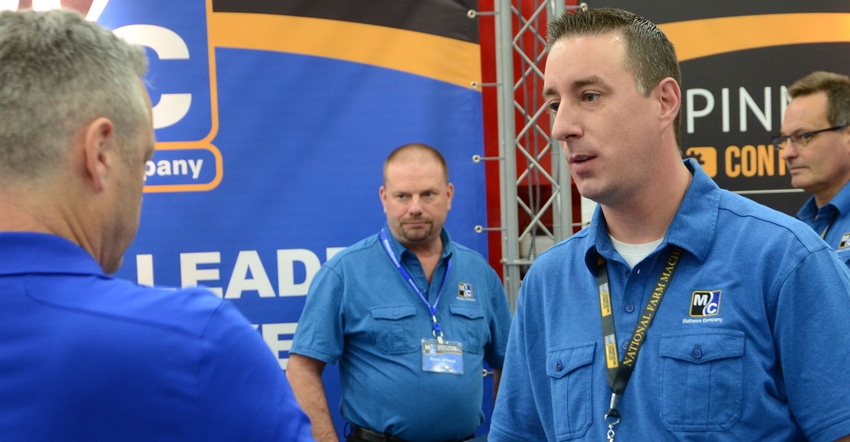March 22, 2018

The farm equipment business is filled with a wide range of innovators, often many who started with something as simple as one idea and built that into a business employing hundreds. But the power of the single entrepreneur can wane as the founder ages, and the industry changes.
When farm equipment industry went through its last depression in the 1980s a lot of familiar brands were purchased, and rolled into other companies. And some companies pushed on, innovating and remained independent.
Those that survived sometimes kept going on a past reputation for durability and dependability for their product line, but just did a share of business that kept the doors open and the lights on. This market can leave those companies behind, and in the case of Mathews Company, that almost happened. This Illinois firm, long known for its grain drying equipment, but not known for innovation.
In the past decade that has changed, with a new focus on innovation aimed at a market that has seen considerable infrastructure investment. Why the change at Mathews Company – often known by its familiar M-C logo? Enter Joe Shulfer, who became president of the company 5 years ago.
“We had a solid, reputable product line, but it needed innovation,” he explained. “In the past 5-10 years we have redesigned every product in our line.”
This has energized this company, exciting the staff engineers to do new things. Perhaps the biggest sign of change for a casual passerby at a farm show is the Pinnacle 20|20 system for dryer control. Rolled out in 2017 this is a high-tech system that sets a different standard for control. The dual tablet like interface along with its mobile connected design pushes control of grain drying into the 21st century aggressively.
But that’s not all. “Our ECO dryer line has increased energy efficiency for drying in new ways,” Shulfer said.
The company worked with the Propane Education & Research Council, and industry trade group, on the development of the new dryer line. “That was a significant research investment for us,” Shulfer said.
Do it yourself
The folks at M-C have a can-do attitude that might best be shown in their National Farm Machinery Show exhibit in 2018. Nick Nanos, an engineer with the company who now heads up the sales and marketing efforts, explained that every part of the exhibit was built by the company. That’s something many firms usually outsource to exhibit companies, but not M-C.
“We have engineers on our team who love to build miniatures of our equipment, look at the level of detail in that dryer,” Nanos said, pointing out a scale model of one of the company’s newest machines. And the new exhibit this year was extensive with large displays showing the tech, and scale miniatures to give customers a look at the tools and products the firm offers. Every pipe and frame was built in house. Perhaps the only thing not made in house were the video monitors. It shows the kind of corporate culture that Shulfer has fostered in his tenure as president.

ATTENTION TO DETAIL: This miniature Mathews-Company dryer is accurate in every detail, and was built by company engineers.
There is a lot of innovation in agriculture, often sitting in the minds of engineers already working for companies. Shulfer knew that when he challenged his team to develop new products, and his focus on innovation helped drive the company forward.
And Shulfer's aware of the competition, pointing out how others have taken on tactics and design ideas that M-C initiated first. “We’ve had quiet dryer technology for some time,” he quips. “We see others that are now copying our approach.”
The grain storage and drying business is competitive, and M-C has stepped up its game in the past 10 years. And that was done at a time when the market softened. “We’re ready to move ahead with these products, and we know we are meeting customer needs with the tech they want too,” Shulfer concluded.
About the Author(s)
You May Also Like






